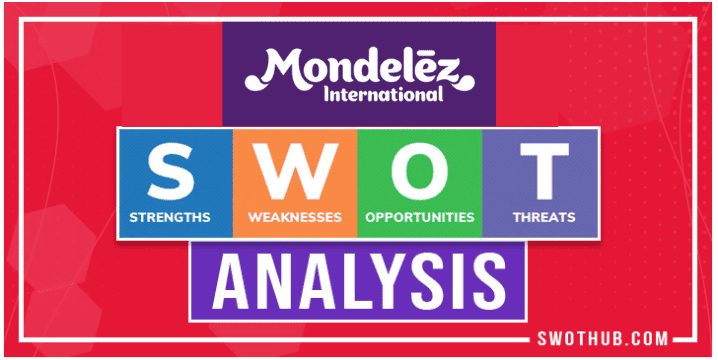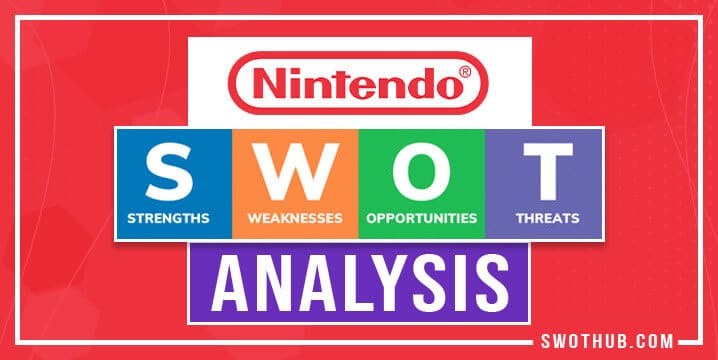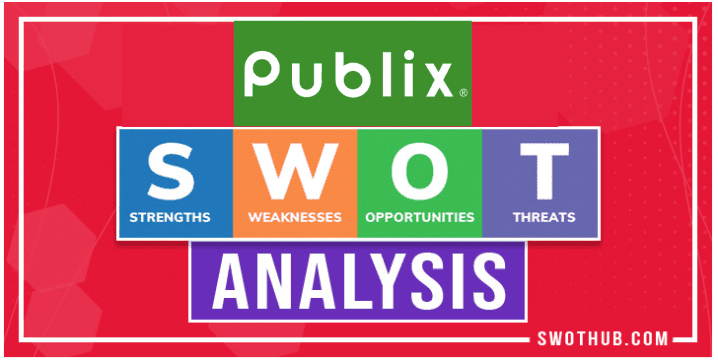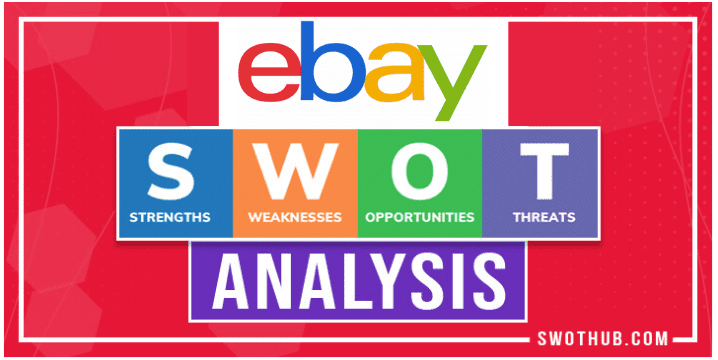In a Mondelez SWOT analysis, we look at one of the top global confectionery, food, and beverage corporations in the world. Mondelez International operates in more than 150 countries with brands like Cadbury, Ritz, Chips Ahoy, Oreo, Philadelphia cream cheese, and Trident, The “Snacking Made Right” manufacturer is the result of the separation of Kraft Foods Inc. The market position and potential of Mondelez can be seen through the prism of understanding Mondelez’s SWOT analysis. Let’s take a look at its strengths, weaknesses, opportunities, and threats.
Table of Contents
History of Mondelez
After the breakup of Kraft Foods Inc. in 2012, Mondelez was established, and Mondelez has since inherited the history of brands that have successfully satiated consumers’ desires for many years.
Since that date, Mondelez has been actively pursuing an aggressive strategy of innovation and expansion. This approach has included the acquisition of key brands and the penetration of emerging markets. By 2023, the comprehensive portfolio of the corporation will have ensured that it maintains its leadership position in the international snack sector, according to a Mondelez SWOT analysis.
Mondelez SWOT Analysis At-A-Glance
| Mondelez | Mondelez, International |
| Industry | Food & Beverage |
| Founder | Thomas H, McInnerney |
| Year founded | 2012 |
| CEO | Dirk Van de Put (2017 – ) |
| Headquarters | Chicago, Illinois |
| Number of employees | 79,000 (2021) |
| Revenue (FY 2022) | $31.5 Billion (U.S) |
Mondelez SWOT Analysis
A SWOT analysis identifies Strengths, Weaknesses, Opportunities, and Threats within a company. It offers a strategic view of internal capabilities and external market realities, which is vital for decision-making.
We are going to examine Mondelez’s SWOT framework in order to have a better understanding of Mondelez’s competitive position as well as its potential for future growth. Learn about the strengths, weaknesses, opportunities, and dangers that Mondelez faces, as well as how its competitors fare versus Mondelez itself.
Mondelez SWOT Analysis Strengths:
The areas where Mondelez excels above average or in a manner that distinguishes it from its rivals are its strengths. Mondelez’s strengths are outlined in this Mondelez SWOT analysis. In a SWOT analysis of Mondelez, some of its strengths compared to competitors include:
Brand Portfolio: In a Mondelez SWOT analysis, The success of Mondelez resides in its vast brand portfolio, which includes well-known brands like Cadbury, Oreo, and Trident. These brands have achieved iconic status in a number of different nations and operate in a variety of snack markets, which ensures that their revenue comes from a wide variety of sources.
Global Presence: In a SWOT analysis of Mondelez International, its footprint is in over 150 countries, ranging from developed nations like the United States to rising markets like India, offers many opportunities for growth. Its capacity to cater to a wide variety of tastes has resulted in the creation of goods such as Cadbury Dairy Milk Silk in India, which reflect the preferences of the locals there. Its ability to cater to diverse tastes has led to products like Cadbury Dairy Milk Silk in India, reflecting local preferences.
Innovative Products: The company’s dedication to innovation is seen in the creation of goods such as Oreo Thins, which are a reaction to the rising desire for more healthful snack options. The brand remains exciting for consumers of all ages because of ongoing research into both the taste and the packaging of its products. Continuous research into the flavor and presentation of the product keeps the brand relevant and appealing to consumers of all ages.
Supply Chain Management: In a Mondelez International SWOT analysis it maintains efficient supply chain management, which allows for streamlined distribution. Maintaining product availability and creating solid partnerships within the sector are both aided by collaborations with local suppliers and retailers such as Walmart, for example.
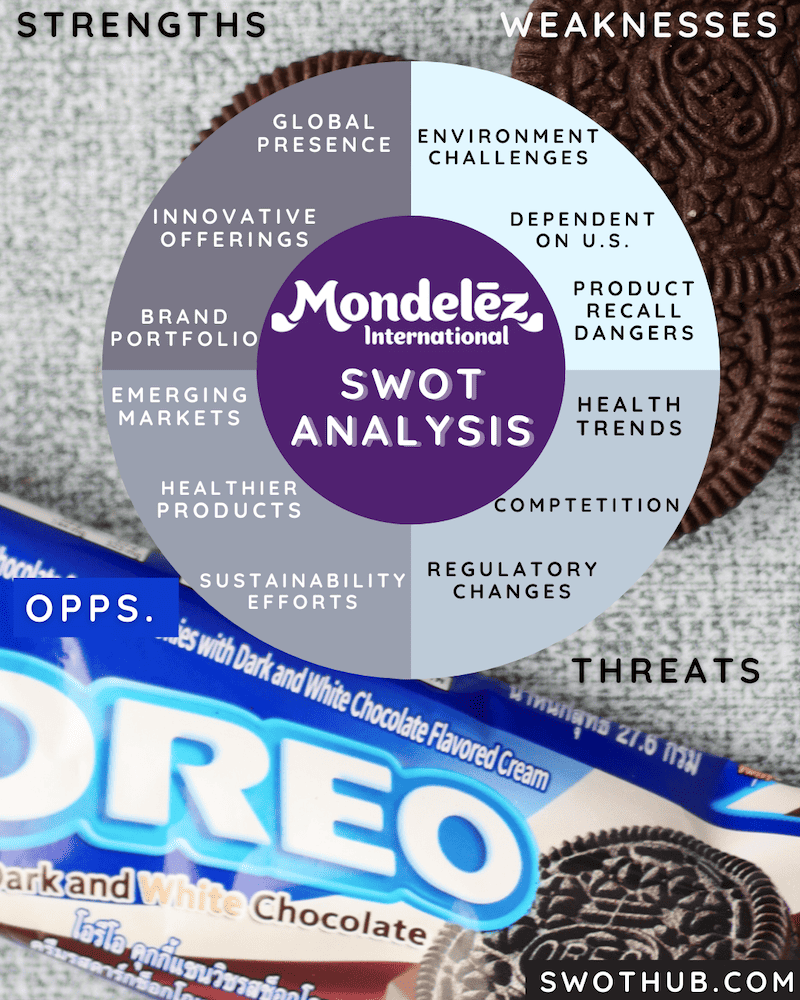
Mondelez SWOT Analysis Weaknesses:
The weaknesses of Mondelez are those that limit its potential, make it less competitive, and prevent it from achieving its goals. In this section of the Mondelez SWOT analysis, we’ll look at Mondelez’s weaknesses. In a Mondelez SWOT analysis, some of their weaknesses compared to competitors include:
Dependency on U.S. Markets: According to Mondelez’s annual report for the year 2020, the majority of the company’s revenue is generated from sales in Western areas such as Europe and North America. Variations in the economies of some regions might have a disproportionately negative impact on revenues.
Environmental Challenges: In a Mondelez SWOT analysis, Mondelez has been under fire for the way it obtains its palm oil, which has given rise to environmental worries over deforestation. Environmental organizations have taken aim at businesses such as Oreo, demanding that they practice responsible sourcing.
Product Recall Dangers: In 2016, Mondelez was forced to recall some of its Cadbury products owing to allergen concerns. This affected consumer trust and loyalty, which was a problem for Mondelez.
Stiff Competition: Mondelez faces off against industry titans such as Nestlé and Mars in the intensely cutthroat snack food business. It is necessary to make consistent investments in marketing, such as the iconic advertising for Cadbury’s “Gorilla” candy bar.
Mondelez SWOT Analysis Opportunities:
Mondelez has a wide variety of opportunities for growth. The following portion of the Mondelez SWOT analysis will examine some of Mondelez’s opportunities compared to competitors, including:
Emerging Markets: Mondelez’s investments in emerging areas, including Brazil and China, allow the company the opportunity to reach new consumer bases. The expansion of these markets is propelled by the introduction of products such as Cadbury Lickables, which have been developed with these consumers in mind.
Sustainability Practices: Mondelez can appeal to environmentally aware consumers and offset earlier criticism by implementing eco-friendly activities such as committing to recyclable packaging by the year 2025. Other examples of these types of initiatives include reducing energy use and reducing waste.
Healthier Products: Mondelez is now able to capitalize on the wellness trend and meet the demands of consumers who are health conscious as a result of the company’s decision to introduce healthier product lines, such as BelVita morning biscuits.
Digital marketing: By utilizing digital channels such as social media to promote items such as “Team Oreo” campaigns, businesses are able to engage younger consumers, fostering brand loyalty and enabling personalization.
Mondelez SWOT Analysis Threats:
Threats pose a risk to Mondelez’s stability and profitability. This article on the Mondelez SWOT analysis will address some of the threats that are important to examine.
In a SWOT analysis of Mondelez, some of its largest threats compared to competitors include:
Regulatory Changes: Upcoming international laws regarding the content of sugar and trans fats may have an impact on Mondelez’s ability to formulate its products. Recent legislation in Europe has mandated the modification of certain products, such as Cadbury Dairy Milk.
Health Trends: In a Mondelez SWOT analysis, the growing movement toward healthy, unprocessed foods poses a challenge to the conventional snack food industry. Mondelez needs to consistently innovate in order to make its goods suitable for customers who are concerned about their health.
Currency Fluctuations: Because Mondelez has such a large footprint around the world, the company is vulnerable to the effects that currency volatility can have on its profitability in non-domestic markets.
Competitor Innovations: Competitors such as Ferrero are also innovating and expanding, such as by purchasing the confectionery business that Nestlé had in the United States. Mondelez must maintain a state of vigilance if it is to maintain its position as a competitive player in the dynamic landscape of the snack sector.
Mondelez Competitors:
In a SWOT analysis of Mondelez, its competitors would fall under the “threats” category. Here are some of Mondelez’s main competitors in the snack food industry: Many people ask:
- Nestlé, the largest food and beverage corporation in the world, possesses a broad assortment of goods that fall into a variety of categories. Comparatively, Mondelez is dominant in the category of snack foods and confectionery, whereas Nestlé offers a more diverse range of products, such as those for health science and pet care. There is direct competition between Mondelez’s products and brands such as KitKat and Smarties.
- Hershey’s is well-known for chocolate items such as Hershey’s bars and Hershey’s Kisses.
Comparatively, Hershey’s primarily produces chocolates, which positions it as a direct competitor to Cadbury’s chocolate products. On the other hand, the majority of its operations are carried out in North America, whereas Mondelez has a presence in other parts of the world. - Mars, Inc. is a multinational confectionery corporation best known for its chocolate-based treats such as M&M’s, Mars bars, and Snickers. Comparatively, Mars faces direct competition from Mondelez in the gum and candy markets. Additionally, the company has a sizeable presence in the pet care and food product markets, which helps to diversify its portfolio.
- PepsiCo (Frito-Lay division) is a giant in the snack market, producing chips and other types of foods. While PepsiCo is best known for its beverages, Frito-Lay is a leader in the chip sector.
In the category of snacks, Frito-Lay competes with Mondelez as an industry rival. In a Mondelez SWOT analysis, there is competition for Mondelez’s savory snack products from brands such as Lay’s and Doritos.
Mondelez SWOT Analysis: Conclusion and Recommendations:
Mondelez needs to focus on a number of key strategies to remain competitive in the snacking and confectionery industries.
- Diversification: Mondelez should further diversify into emerging markets to reduce dependence on Western markets.
- Sustainability Commitment: Implementing transparent sustainable practices will boost the brand’s image.
- Quality Control: Investing in robust quality control can minimize recall risks, enhancing consumer trust.
- Adaptation: Continuous adaptation to market trends and consumer preferences will ensure ongoing success.
- Healthy-Food Conscious: Mondelez needs to consistently offer healthier options for buyers who want to have a balance of healthy vs. snack foods.
Mondelez International dominates the snack food and confectionery sector with brands including Cadbury and Oreo. Their global presence, covering over 150 countries, and nimble innovation assure product relevancy across varied markets. However, Western market dependence and environmental issues, particularly sustainable sourcing, are weaknesses.
In a Mondelez SWOT analysis, it has several opportunities in emerging markets. Products can grow by targeting new audiences and capitalizing on global health trends. Mondelez has unique marketing opportunities for millennials and Gen-Z in the digital age. However, legislative changes, health paradigm shifts, currency instability, and Nestlé and Mars’ intense competitiveness require caution.
FAQs for Mondelez International
What is the weakness of Mondelēz International?
A notable weakness of Mondelēz International is its reliance on confectionery and snack products, making it susceptible to changing consumer preferences towards healthier alternatives and potential regulatory challenges regarding sugary and processed foods.
What is the strategy of Mondelez?
Mondelez’s strategy focuses on driving growth through brand power, optimizing costs, and capitalizing on emerging market opportunities.
What is Mondelez’s competitive advantage?
Mondelez’s competitive advantage stems from its strong brand portfolio, global distribution capabilities, and innovative product development.
Mondelez must focus on sustainable sourcing, diversify its revenue base beyond the West, and continue its product development and marketing innovation to be competitive. Mondelez’s adaptability and foresight will decide its snack dominance.

